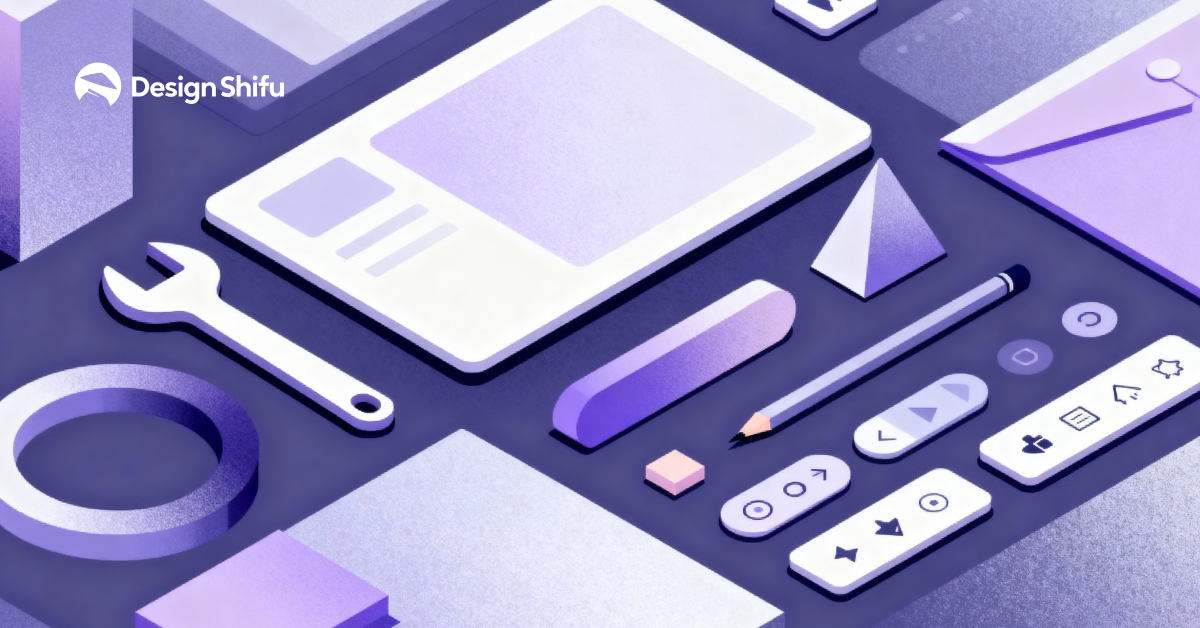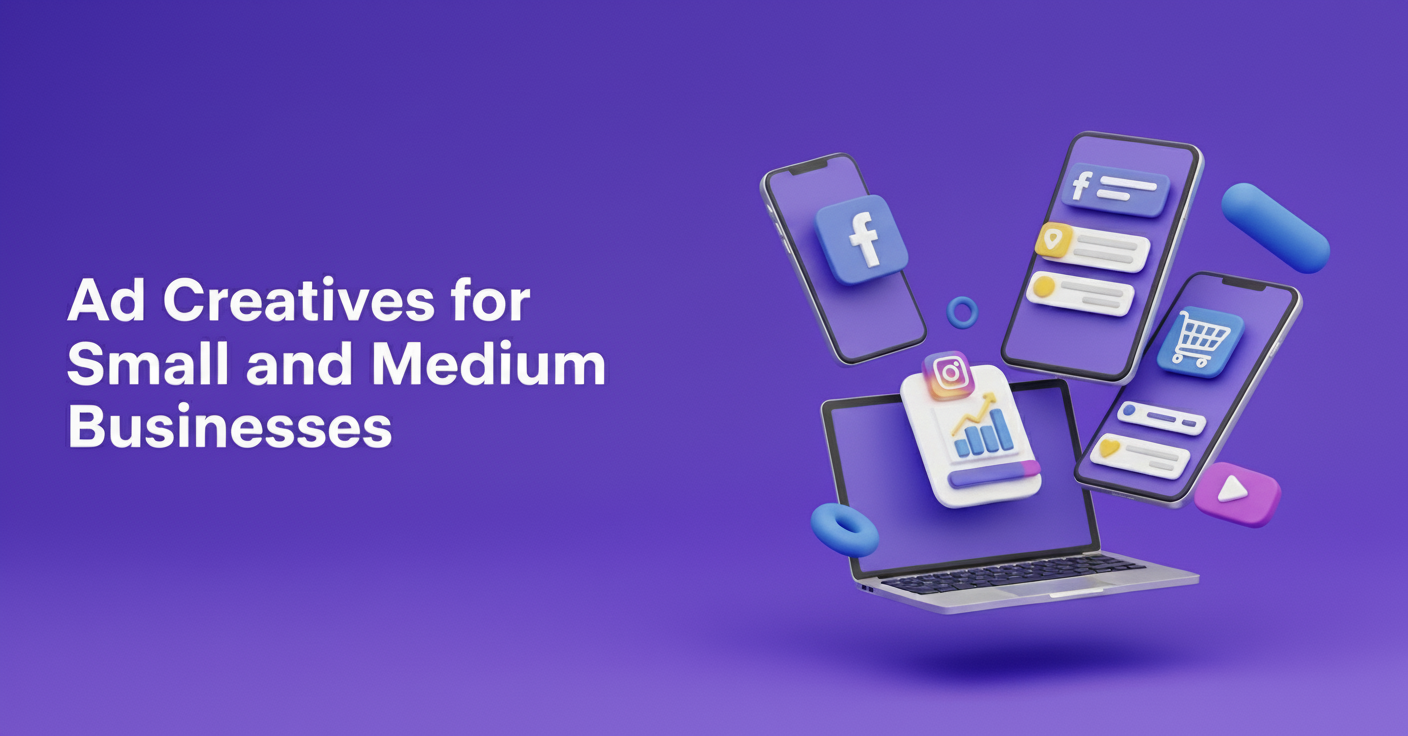You need a logo. A website. A social media post. Maybe all three. You know what you want it to feel like, but you can’t draw it. You don’t know design terms. And you’re worried the designer won’t understand your vision.
Sound familiar?
Here’s the good news: You don’t need to be a designer to give a great design brief. You just need to know what information designers actually need to do their best work.
This guide will show you exactly how to brief a designer, even if you can’t tell the difference between kerning and leading (and honestly, you don’t need to).
TL;DR
- Be Specific: Tell them exactly what you want (logo, website, social post)
- Provide Context: Share about your company, who your audience is, and what you are trying to accomplish
- Give Examples: Send them 3 – 5 things you like, and 1 – 2 things you don’t like
- Set Parameters: Include technical specs, deadlines, budget, and must-haves.
- Provide Feedback in an Appropriate Manner: Be specific (what do you like, what don’t you like) be constructive, and reference feedback back to your brief.
Pro Tip: Use the template in this guide to make briefing easier for you and end up with designs you will actually like!
What Is a Design Brief and Why Does It Matter?
A design brief is simply a document that explains what you want designed. Think of it as a roadmap that helps the designer understand your vision, goals, and expectations.
A good brief saves you time and money because:
- The designer gets it right the first time (or close to it)
- You avoid endless rounds of revisions
- The final design actually solves your problem
- Everyone knows what success looks like
A bad brief (or no brief at all) leads to frustration, wasted money, and designs that miss the mark completely.
The 10 Essential Things Every Design Brief Needs
Let’s break down exactly what information you need to give your designer. Use this as a checklist for every project.
1. Start With the Basics: What You’re Creating
Be specific about what you need. Don’t say “marketing materials.” Instead, say:
- Instagram post (square, 1080×1080 pixels)
- Logo for my bakery
- Flyer for a yoga class (A5 size, printed)
- Website homepage design
- Email newsletter template
The more specific you are, the better. If you’re not sure about technical details (like pixel sizes), that’s okay. Just describe what you need in plain language.
For example, if you need a website homepage, check out our guide on Landing Page Design: How Visuals Drive Conversions for tips on structuring your content.”
2. Explain Your Business and What You Do
Your designer needs context. Help them understand:
- What your business does
- Who your customers are
- What makes you different from competitors
- Your company’s personality (formal? playful? luxury? budget-friendly?)
Don’t assume they know your industry. A designer who works on tech startups all day might not understand the funeral services industry without explanation.
Example: “We sell handmade soap using only natural ingredients. Our customers are mostly women aged 25-45 who care about sustainability and chemical-free products. We’re a small family business with a warm, earthy feel. We’re different because all our ingredients come from local farms within 50 miles.”
3. Define Your Target Audience Clearly
Who will see this design? The more details you give, the better.
Include:
- Age range
- Gender (if relevant)
- Income level
- Location
- Interests
- Problems they’re trying to solve
A design that appeals to teenage gamers will look completely different from one targeting retirement-age travelers. Your designer needs to know who they’re designing for.
4. State Your Project Goals and What Success Looks Like
What do you want this design to achieve? Be honest and specific.
Good goals:
- “Get people to sign up for our email list”
- “Make our brand look more professional”
- “Stand out at a crowded trade show”
- “Increase clicks on our social media posts”
- “Help customers understand our new service”
Avoid vague goals like “look good” or “be creative.” Those don’t give the designer direction.
5. Share Design References and Examples You Like
This is where you show, not tell. Gather 3-5 examples of designs you like and explain why you like them.
You can find inspiration from places like Behance, Dribbble, Pinterest, competitor websites, Instagram posts, or even magazines and websites you enjoy.
For each example, explain what you like:
- “I love how clean and minimal this feels”
- “The colors in this one are perfect for our brand”
- “This layout makes everything easy to understand”
- “I like the playful font they used here”
Also share 1-2 examples of what you don’t want. This helps avoid wrong directions.
Note: Showing examples doesn’t mean you want a copy. It helps the designer understand your taste and preferences.
6. Provide Your Brand Guidelines (If You Have Them)
If you already have brand elements, share them:
- Logo files (preferably in multiple formats)
- Brand colors (with color codes if possible)
- Fonts you use
- Brand personality or tone of voice
- Any design rules you follow
Don’t have formal brand guidelines? No problem. Just describe your brand in simple terms:
“Our brand is friendly and approachable, not corporate or stuffy. We use bright colors and simple language. Think neighborhood coffee shop, not Wall Street bank.”
7. Set Clear Deadlines and Timeline Expectations
When do you need the final design?
Be realistic. Most designers need:
- 3-5 days for simple projects (social media posts, simple flyers)
- 1-2 weeks for medium projects (logos, multi-page brochures)
- 2-4 weeks for complex projects (websites, brand identity packages)
Also mention if you have a hard deadline (like a product launch or event date). This helps the designer prioritize.
Include how many rounds of revisions you expect to need. Two rounds is standard for most projects.
8. Explain Technical Requirements and Constraints
Tell your designer about any technical needs or limitations:
For Digital Designs:
- What platform will this appear on? (Instagram, website, email)
- What size does it need to be?
- Does it need to work on mobile phones?
- What file format do you need?
For Print Designs:
- What size will it be printed?
- Will it be full color or black and white?
- What type of paper?
- Who’s printing it?
Other Constraints:
- Budget limitations
- Must include certain elements (like a partner’s logo)
- Accessibility requirements (like high contrast for readability)
9. List All Required Elements and Content
What specific things need to be in the design? Make a checklist:
For a flyer:
- [ ] Company logo
- [ ] Headline: “Summer Sale – 50% Off”
- [ ] Three bullet points about the sale
- [ ] Store address
- [ ] Phone number
- [ ] QR code linking to website
- [ ] “Valid until August 31” in small print
For a social media post:
- [ ] Product photo (I’ll provide)
- [ ] Text: “New flavor launching Monday!”
- [ ] Instagram handle
- [ ] Hashtags (I’ll provide list)
Being this specific prevents the “Oh, I forgot to mention…” moment that requires starting over.
10. Include Your Budget and Payment Terms
Be upfront about the budget. This helps the designer:
- Decide if they can take the project
- Understand the scope
- Propose the right solution
You don’t need to share your maximum budget, but give a range. “We have between $500-$800 for this project” works perfectly.
Also clarify:
- How you’ll pay (bank transfer, PayPal, etc.)
- Payment schedule (50% upfront, 50% on completion is common)
- What’s included in the price (number of concepts, revisions, file formats)
How to Describe Design Without Using Design Words
You’re not a designer, so you don’t need to sound like one. Here’s how to communicate design ideas in plain language:
Instead of design jargon, describe feelings and associations:
| Vague Feedback | Better, Specific Feedback |
|---|---|
| “Make it modern” | “Clean and simple, like an Apple store” |
| “Use hierarchy” | “The headline should be the first thing people see” |
| “It needs better visual balance” | “It feels too crowded on the left side” |
| “The kerning is off” | “The letters in the title look too squished together” |
Even if you don’t know font terminology, understanding readability basics such as Typography in Book Layout can help you communicate better with your designer.”
Use comparisons to things the designer will recognize:
- “As clean as a Scandinavian furniture catalog”
- “As bold as a movie poster”
- “As friendly as a children’s book”
- “As elegant as a wedding invitation”
The Biggest Mistakes People Make When Briefing Designers
Avoid these common pitfalls:
Mistake #1: Being Too Vague
“Make it pop” or “Make it more professional” doesn’t help. Be specific about what you mean.
Mistake #2: Changing Requirements Midway
Decide what you want before the project starts. Changing your mind halfway through costs time and money.
Mistake #3: Designing by Committee
Too many decision-makers leads to watered-down designs. Assign one person to give feedback.
Mistake #4: Providing No Context
Don’t just say “I need a logo.” Explain your business, audience, and goals.
Mistake #5: Expecting Mind Reading
Designers are creative, not psychic. If you have specific ideas, share them.
Mistake #6: Not Giving Honest Feedback
If you don’t like something, say so. “It’s fine” when you hate it wastes everyone’s time.
How to Give Feedback That Actually Helps
You’ll need to give feedback during the design process. Here’s how to do it effectively:
Do This:
- Be specific: “The blue feels too bright for our brand”
- Explain why: “Our customers are luxury buyers who expect subtle, elegant colors”
- Suggest solutions: “Could we try a darker, navy blue instead?”
- Reference the brief: “Remember we wanted it to feel upscale and refined”
- Give feedback all at once: Don’t send 10 separate messages with one comment each
Don’t Do This:
- Be vague: “I don’t like it”
- Use only negative feedback: “This is all wrong”
- Make it personal: “This looks like something my kid would make” Ask for changes that contradict the original brief
- Involve too many people: Getting opinions from your entire family
Simple Design Brief Template You Can Use
Here’s a fill-in-the-blank template to make briefing easy:
PROJECT OVERVIEW
- What we need: [specific design deliverable]
- Purpose: [why we need this]
- Deadline: [when we need it by]
ABOUT OUR BUSINESS
- We are: [brief description]
- We do: [what you sell/offer]
- Our customers are: [target audience details]
- What makes us different: [your unique selling point]
PROJECT GOALS
- Success looks like: [specific, measurable outcome]
- The main message is: [key takeaway]
DESIGN DIRECTION
- We want it to feel: [3-5 adjectives]
- Examples we love: [links or attachments with explanations]
- Examples we don’t like: [what to avoid]
REQUIRED ELEMENTS
- Must include: [checklist of all elements]
- Must NOT include: [anything to avoid]
TECHNICAL DETAILS
- Size/dimensions: [specific measurements]
- Format needed: [file types]
- Where it will be used: [platform/medium]
BUDGET & TIMELINE
- Budget range: [dollar amount or range]
- Deadline: [specific date]
- Revision rounds included: [usually 2-3]
Red Flags: When Your Brief Might Need Work
Your brief might need improvement if:
- The designer asks lots of basic questions (means your brief lacked key info)
- The first design is completely off (means your direction wasn’t clear)
- You need more than 3-4 revision rounds (means expectations weren’t aligned)
- The designer seems confused about what you want (means you need to clarify)
- Different designers interpret your brief completely differently (means it’s too vague)
Working With Designers: Communication Tips
Beyond the brief, good communication makes everything smoother:
- Set expectations early: Clarify response times, revision processes, and working hours.
- Be available: Answer questions quickly so the designer doesn’t get stuck waiting.
- Trust their expertise: They’re the design professionals. Listen to their suggestions.
- Respect their process: Good design takes time. Don’t expect miracles overnight.
- Build a relationship: Designers who know your brand do better work over time.
Key Takeaways
A great design brief includes:
- Clear description of what you need
- Context about your business and audience
- Specific goals and success metrics
- Visual references and examples
- All required content and elements
- Technical specifications
- Budget and timeline
- Brand guidelines or personality
Remember:
- You don’t need to speak “design language”
- Specificity beats vagueness every time
- Show examples when words fail you
- Good feedback is specific and constructive
- The better your brief, the better the results
Final Thoughts
Briefing a designer isn’t complicated. You just need to be clear, specific, and honest about what you want and why you want it.
Think of it like giving directions to your house. You wouldn’t just say “Come over.” You’d give the address, mention landmarks, and maybe warn about the tricky turn. A design brief works the same way.
The time you spend on a good brief saves hours of back-and-forth later. It’s the difference between getting what you imagined and getting something you have to settle for.
Start with the template above. Fill it out honestly. And don’t worry about sounding professional. Clear beats fancy every single time.
Your designer will thank you. And you’ll get designs you actually love.
FAQs
Do I need design knowledge to brief a designer?
No. You just need to clearly communicate your goals, audience, and preferences. Using examples and describing feelings is enough.
What should be included in a design brief?
How many revisions should I expect from a designer?
Can I use a template for briefing designers?
How do I give constructive feedback if I’m not a designer?





